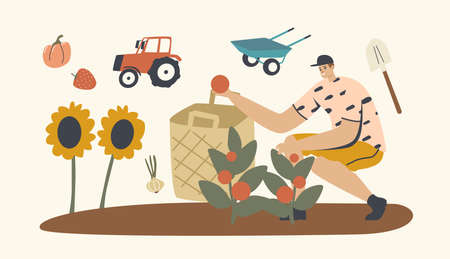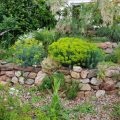1. Choosing the Right Journal for Your Fall Garden
Before you start tracking your fall garden progress, its important to find a journal format that works best for you. Whether youre into pen and paper or prefer digital solutions, the right tool can help you stay organized and motivated throughout the season. Below are some popular options you can consider:
Traditional Gardening Notebooks
If you enjoy writing by hand and flipping through pages, a classic gardening notebook might be your best bet. These allow for sketches, notes, taped-in seed packets, and even pressed leaves. You can choose from pre-formatted garden journals with prompts or go with a blank notebook for full customization.
Pros:
- Tactile and personal
- No batteries or Wi-Fi needed
- Great for creative expression
Cons:
- Harder to search through old entries
- Can get messy or damaged outdoors
Digital Gardening Journals and Apps
For tech-savvy gardeners, digital tools like apps and spreadsheets offer convenience and accessibility. Many gardening apps allow you to log plant types, planting dates, weather conditions, photos, and even reminders for tasks like watering or fertilizing.
Popular Digital Tools:
| Tool | Description | Best For |
|---|---|---|
| Gardenize | A mobile app to track plants, beds, and tasks with photos. | Visual planners and photo lovers |
| Planter App | Offers layout planning and plant care reminders. | Beginner gardeners who want structured support |
| Google Sheets/Excel | A flexible option for those who love custom organization. | Detail-oriented gardeners and spreadsheet fans |
Hybrid Options: Best of Both Worlds
If you cant decide between paper and digital, why not use both? You might jot quick notes in a physical journal while keeping photos and detailed timelines in an app. This hybrid approach gives you flexibility without missing out on any features.
Tip:
You can also print out your digital notes at the end of the season and add them to a binder for easy reference next year!
No matter which format you choose, the most important thing is consistency. Find a journal that feels natural to use so you’ll stick with it all season long.
2. Tracking Weather and Seasonal Changes
Keeping an eye on the weather is one of the most important parts of your fall garden journal. By tracking things like temperature changes, frost dates, and rainfall, you’ll get a better understanding of how your garden reacts to the season—and how you can plan better next year.
Why Weather Tracking Matters
The weather directly affects plant health and growth. A sudden cold snap can damage tender plants, while a warm spell might trick some into blooming too early. When you write down daily or weekly weather conditions, you start to notice patterns that help you choose the right time for planting, harvesting, and protecting your garden.
What to Record
Here are key weather elements to include in your journal:
| Weather Element | What to Note | Why It Matters |
|---|---|---|
| Daily High/Low Temperatures | Write down morning lows and afternoon highs | Helps identify trends and temperature shifts |
| Frost Dates | First and last frost of the season | Important for timing plantings and protecting crops |
| Rainfall Amounts | Total inches per day or week | Affects watering schedule and soil moisture levels |
| Storms or Unusual Weather Events | Heavy winds, hail, early snow, etc. | Can impact plant health or cause damage |
How It Helps Your Garden Next Year
When spring rolls around again, you’ll be glad you took notes. Your weather records can help you decide when to start seeds indoors, when to move plants outside, and how to prepare for early frosts. Over time, these notes create a personal gardening calendar tailored to your exact location—something even the best online advice cant match.
Tip:
If writing every day feels like too much, try recording weather once a week or after major changes. Even short notes like “cold snap this week—low of 28°F” can be super helpful later on.
Your Garden’s Microclimate Matters Too
Remember that your yard may not match the official forecast exactly. One side of your home may stay warmer due to sunlight or shelter from wind. Keeping your own records helps reveal those little differences that make a big impact on your plants.
The more consistent your weather tracking is, the smarter your future gardening decisions will be. Plus, it’s fun to look back and see just how much Mother Nature had her hand in your fall harvest.

3. Recording Planting Dates and Varieties
Keeping track of what you plant, when you plant it, and which seed varieties you use is one of the most helpful parts of your fall garden journal. These notes not only help you remember what worked well but also make it easier to plan for next years garden.
Why Record Planting Dates?
Planting dates are important because they help you monitor how long certain crops take to grow in your specific climate. Fall weather can be unpredictable, so knowing your ideal planting window helps ensure your veggies, herbs, and flowers have enough time to mature before frost hits. Plus, these records help with crop rotation planning — planting the same vegetable in the same spot year after year can lead to soil problems and pests.
Why Note Varieties?
Not all seeds are created equal. Different varieties of the same plant may perform differently depending on your local conditions. Some might be more cold-tolerant or resistant to certain diseases. By recording the exact seed variety (like “Lacinato Kale” vs. just “Kale”), youll know which ones performed best and which ones to skip next time.
Sample Planting Record Table
| Plant Type | Variety | Date Planted | Notes |
|---|---|---|---|
| Kale | Lacinato | Sept 1 | Grew well, good frost tolerance |
| Carrots | Nantes | Aug 25 | Took longer to germinate than expected |
| Sage | Berggarten | Sept 10 | Strong flavor, compact growth |
Tips for Keeping Good Records
- Use a consistent format each season so its easy to compare years.
- If using store-bought seeds, tape the empty packet into your journal page for quick reference.
- Add photos if possible—seeing how your plants looked at different stages can be super helpful.
- Include any unusual weather notes that might explain why a variety did better or worse than expected.
A little effort now goes a long way when youre starting your fall garden next year. Youll thank yourself for taking these notes!
Monitoring Growth and Garden Maintenance
Keeping track of your fall gardens progress is one of the most valuable parts of your garden journal. It helps you stay on top of what’s working, what needs attention, and how your plants are growing over time. By consistently recording growth patterns, maintenance tasks, and any issues that pop up, you’ll be better prepared to keep your garden healthy and productive throughout the season.
Track Plant Growth
Use your journal to note how quickly each plant is growing. Record the height, width, number of leaves or flowers, and any signs of fruiting. This data can help you compare performance year after year and make informed choices about which varieties to grow again.
Sample Growth Tracking Table:
| Plant | Date Planted | Height (inches) | Notes |
|---|---|---|---|
| Kale | Sept 5 | 6 | Healthy, no pests |
| Carrots | Sept 8 | N/A | Shoots just emerging |
| Broccoli | Sept 10 | 4 | Aphids spotted on lower leaves |
Log Pest Activity
Pest problems can sneak up fast in the fall. Make a habit of checking for signs like holes in leaves, webbing, or visible bugs. Write down when and where you find pests, what kind they are (if known), and how you treated them. This helps spot trends and figure out which prevention methods work best.
Keep a Fertilizing Schedule
Your fall crops still need nutrients to thrive. Use your journal to record what fertilizers you use, how much you apply, and when. This avoids over-fertilizing and helps identify if certain plants respond better to specific feeding routines.
Fertilizing Log Example:
| Date | Plant/Bed | Fertilizer Type | Amount Used |
|---|---|---|---|
| Sept 12 | Kale Bed A | Organic compost tea | 1 quart per plant |
| Sept 15 | Root Veggies Bed B | Bone meal | 1 tbsp per row foot |
Document Pruning and Other Tasks
If youre pruning herbs like sage or trimming back overgrown plants, log those actions too. Include dates and the reason for pruning—whether it was for shape, airflow, or removing dead material. Also jot down other maintenance chores like weeding, mulching, or staking tall plants.
Maintenance Task Checklist Example:
- [ ] Sept 18 – Prune back thyme bush (getting leggy)
- [x] Sept 20 – Added straw mulch around carrots to retain moisture
- [ ] Sept 22 – Stake Brussels sprouts (starting to lean)
The more details you include in your fall garden journal about growth and maintenance, the easier it becomes to troubleshoot problems and celebrate successes in future seasons.
5. Reflecting on What Worked and What Didn’t
One of the most valuable parts of keeping a fall garden journal is taking time to reflect on how your garden performed. This isnt just about celebrating what went well—its also about learning from the things that didn’t go as planned. By looking back at your notes, photos, and records, you can figure out what changes will help your garden thrive next fall.
Why Reflection Matters
Fall gardening can be tricky with changing temperatures, shorter days, and unpredictable weather. Your journal helps you spot patterns and understand how different plants responded to these conditions. Did a certain variety of kale bolt too early? Did your mums bloom beautifully after a late pruning? Writing it all down gives you a clear picture for next year.
Questions to Ask Yourself
Use these questions as prompts when reviewing your journal entries:
- Which plants thrived in the cooler weather?
- Were there any pests or diseases that became a problem?
- Did your soil amendments make a difference?
- What planting dates worked best?
- What would you do differently next season?
Sample Reflection Table
A simple table like this can help you organize your thoughts:
| Plant | Successes | Challenges | Notes for Next Year |
|---|---|---|---|
| Spinach | Grew quickly, no pests | Bolt early due to warm spell | Try planting 1-2 weeks later |
| Pumpkins | Great harvest size and color | Took up too much space | Use trellis or plant fewer vines |
| Kale | Tolerated frost well | Aphid infestation in October | Add row covers earlier in season |
Your Garden, Your Lessons
No two gardens—or gardeners—are the same. What works for one person may not work for another. The key is to use your own experiences to guide future decisions. Over time, your fall garden journal becomes not just a record but a roadmap toward better results each year.


